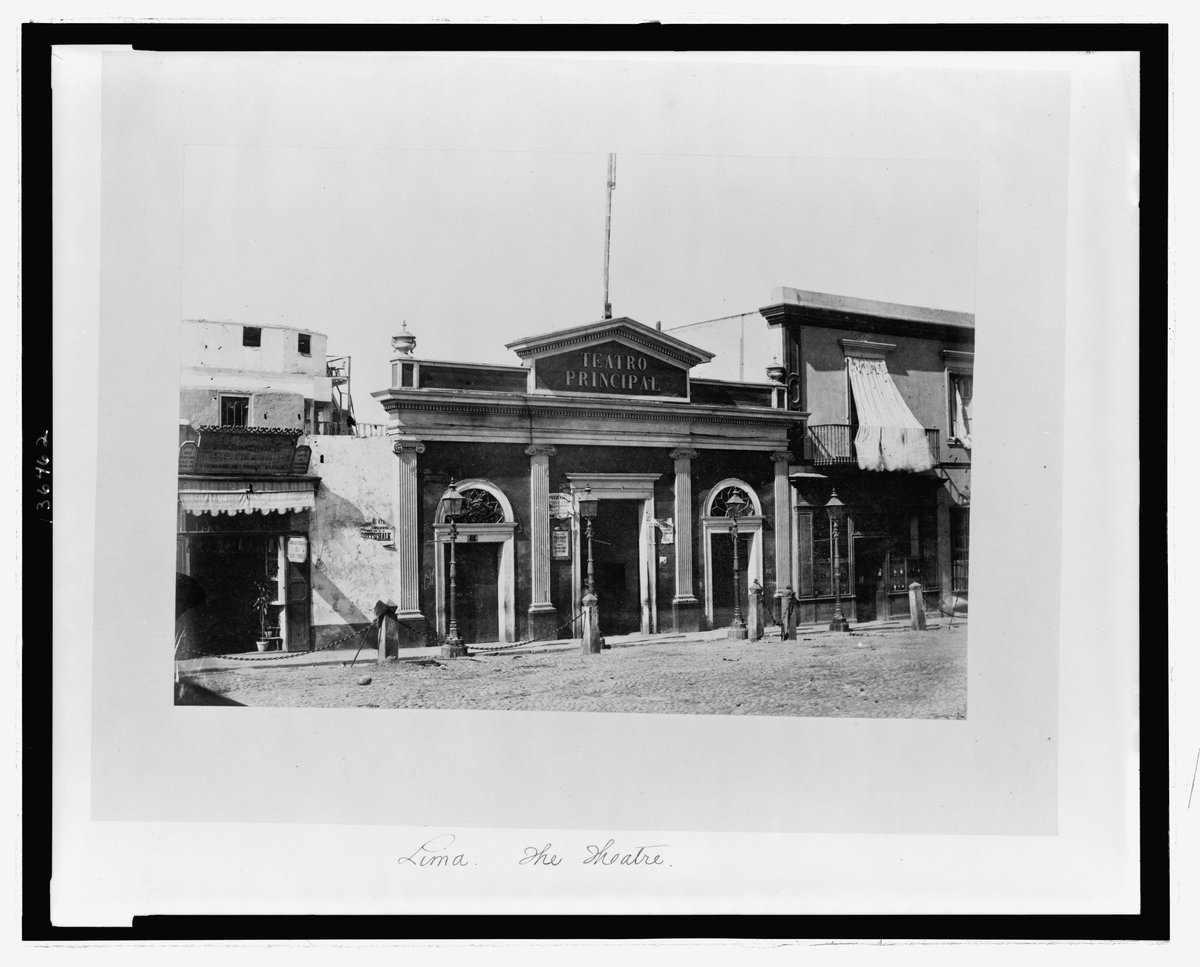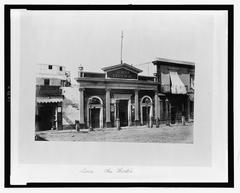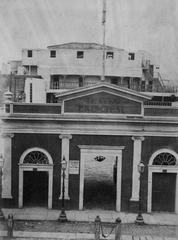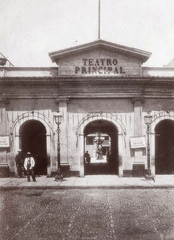
Teatro Manuel Ascencio Segura: Complete Visitor Guide, Hours, Tickets, and Lima Historical Sites
Date: 14/06/2025
Introduction: The Cultural Heartbeat of Lima
Set in the heart of Lima’s historic center, the Teatro Manuel Ascencio Segura stands proudly as one of Latin America’s oldest and most important theaters. Founded in the early 17th century, it has borne witness to centuries of Peruvian social, artistic, and political evolution. Its neobaroque architecture and storied stage have played host to defining moments in national history and continue to serve as a vibrant hub for the performing arts. Whether you’re a culture seeker, history enthusiast, or simply exploring Lima’s architectural gems, the Teatro Segura offers a compelling window into Peru’s rich artistic heritage (Wikipedia; Turismo Peruano; Viasatelital; LimaEasy).
Historical Overview
Colonial Beginnings
The site’s theatrical tradition dates back to 1599, when performances were first recorded on the grounds that would become the Teatro Segura. In 1615, Alonso de Ávila constructed the Corral de Comedias, an open-air theater reflective of Spanish tradition. This venue became Lima’s central gathering place for drama, hosting both Spanish classics and the first wave of Peruvian playwrights.
Destruction and Renewal
The devastating 1746 earthquake razed the original theater, prompting Viceroy José Antonio Manso de Velasco to commission a new structure in 1747. The rebuilt space was a testament to Lima’s resilience and its commitment to the arts (Wikipedia).
19th Century Transformations
Throughout the 19th century, the theater evolved in tandem with Peru’s national identity. In 1822, during the dawn of independence, it was reformed and became known as the Teatro Principal. It hosted pivotal moments, such as the first public performance of the Peruvian National Anthem by Rosa Merino in the presence of General José de San Martín (Wikipedia; Turismo Peruano). After suffering multiple fires and reconstructions, the current building was inaugurated in 1909 as Teatro Municipal, and later renamed Teatro Manuel Ascencio Segura in 1929 to honor the Peruvian dramatist.
20th–21st Century: Restoration and Reinvention
The 20th century saw the addition of the Sala Alzedo, further modernizing the venue while retaining its historical essence. After a major restoration between 2018 and 2022, the theater emerged fully revitalized, boasting upgraded facilities and renewed architectural splendor (Viasatelital).
Architectural Features and Facilities
Teatro Segura’s neobaroque style is characterized by an ornate façade, horseshoe-shaped auditorium, and intricate interior detailing. The main hall seats up to 803 visitors across four levels, with facilities including modern dressing rooms, accessible restrooms, a musicians’ pit, and a rehearsal space. The Sala Alzedo annex supports additional events and performances (Museo Municipal del Teatro). A café and cloakroom area are available for guests.
Cultural and Social Significance
Teatro Segura is a living symbol of Peru’s cultural resilience and artistic vitality. Its stage has hosted everything from Spanish Golden Age plays to contemporary operas, zarzuelas, and concerts. The theater is also noted for its role in community engagement, offering workshops, educational programming, and free or subsidized performances to broaden public access to the arts (LimaEasy; Cultura para Lima).
Practical Visitor Information
Location
Address: Jr. Huancavelica 265, Centro Histórico de Lima, Peru
A short walk from the Plaza Mayor, Government Palace, and other key historic sites (Turismo Peruano).
Visiting Hours
- Box Office: Opens two hours before each performance
- Typical Visiting Hours: Tuesday to Sunday, 10:00 AM – 6:00 PM (hours may vary for special events or holidays)
Tickets
- General Admission: 15 PEN
- Students/Seniors: 10 PEN
- Children under 12: Free
- Purchase: Onsite at the box office or online via the official website. Advance booking is recommended for popular shows and guided tours (Viasatelital).
Accessibility
- Wheelchair ramps and accessible restrooms
- Assistive listening devices available on request
Guided Tours and Special Events
- Guided Tours: Daily at 11:00 AM and 3:00 PM (advance booking recommended)
- Special Events: Regular performances, cultural festivals, and community workshops are scheduled throughout the year
Nearby Attractions: Explore Lima’s Historic Center
All within a 2–10 minute walk from the theater:
- Plaza Mayor (Plaza de Armas): Lima’s main square, surrounded by colonial architecture.
- Cathedral Basilica of St. John the Apostle and Evangelist: A blend of Gothic, Renaissance, and Baroque styles.
- Plaza San Martín: Celebrating Peruvian independence with grand architecture.
- Jirón de la Unión: Pedestrian avenue with shops and cafes.
- Casa de Osambela: Colonial mansion with iconic blue façade.
- Basilica and Convent of Nuestra Señora de la Merced: Baroque religious complex.
- Casa de Correos y Telegrafos: Central post office and postal museum.
- Palacio de Torre Tagle: 18th-century palace with elaborate wooden balconies.
- Archbishop’s Palace of Lima: Ornate façade and ecclesiastical history.
Suggested Itineraries
Half-Day Walking Tour (3–4 hours)
- Start at Teatro Segura (tour or performance)
- Visit the Church of San Agustín (2 min walk)
- Stroll along Jirón de la Unión
- Explore Plaza Mayor and the Cathedral
- Pause at the Archbishop’s Palace
Full-Day Heritage Circuit (6–8 hours)
- Morning: Teatro Segura
- Casa de Correos y Telegrafos
- Casa de Osambela
- Lunch on Jirón de la Unión
- Afternoon: Plaza San Martín, Palacio de Torre Tagle, and Basilica de la Merced
Evening Cultural Experience (2–3 hours)
- Attend a show at Teatro Segura
- Walk to Plaza San Martín for night views
- Enjoy a post-show stroll along Jirón de la Unión
Visitor Tips
- Most attractions are a short walk from the theater
- Use caution with valuables, especially at night
- Wear comfortable shoes for uneven streets
- Dress modestly for religious sites and smart-casual for theater performances
- Photography is generally allowed in public areas, but restricted during shows
- Most performances are in Spanish, but visual and musical elements are universally accessible
Frequently Asked Questions (FAQ)
What are the visiting hours for Teatro Manuel Ascencio Segura?
Tuesday to Sunday, 10:00 AM to 6:00 PM. The box office opens two hours before shows.
How do I buy tickets?
At the box office or online. Advance booking is recommended.
Is the theater accessible for wheelchair users?
Yes, there are ramps, accessible restrooms, and assistive listening devices.
Are guided tours available?
Yes, guided tours are held daily at 11:00 AM and 3:00 PM.
What are some nearby attractions?
Plaza Mayor, Cathedral Basilica, Plaza San Martín, Jirón de la Unión, and more.
Visual Gallery
Alt text: Teatro Manuel Ascencio Segura facade, a historic theater in Lima
Alt text: Interior of Teatro Manuel Ascencio Segura showing seating and stage
Alt text: Map highlighting Teatro Manuel Ascencio Segura location in Lima Centro Histórico
Summary and Recommendations
Teatro Manuel Ascencio Segura is a cornerstone of Peru’s performing arts and a living testament to Lima’s enduring cultural spirit. With its rich history, diverse programming, and central location amid the city’s finest landmarks, it is an essential stop for any visitor to Lima. Take advantage of guided tours, attend a performance, and explore the nearby colonial treasures for a truly immersive cultural experience. For up-to-date schedules, events, and ticketing, consult the official theater website or local tourism portals (Wikipedia; Infobae; Viasatelital).
Sources & Further Reading
- Wikipedia: Teatro Segura
- Turismo Peruano
- Viasatelital
- Infobae
- LimaEasy
- Museo Municipal del Teatro
- Trek Zone: Lima Guide

















































































































